In 2018, I built omeututor.com, a marketplace for 100% online tuition focused on the Portuguese market. This was my first real adventure into entrepreneurship and web development.
Of course, since I was just starting out in these two very difficult fields, I made a ton of mistakes and the venture was not successful. I stopped working on it after 6 exhausting months and closed the website after a year.
Nevertheless, I see this experience as a turning point in my career. From then on, I’ve been continuously putting time and effort into learning about technology, design, business, and related subjects which will lead me to do more impactful work and to a more dynamic and flexible career.
This post serves as a memoir of what omeututor.com once was and a reflection of what I’ve learned with this venture.
omeututor.com in its prime
Being omeututor.com a marketplace to connect students with tutors, let’s look at both the students’ and tutors’ experience with the website.
Students’ experience
Students’ journey started on the “How it works” page, where they learned how to find tutors and schedule a session.
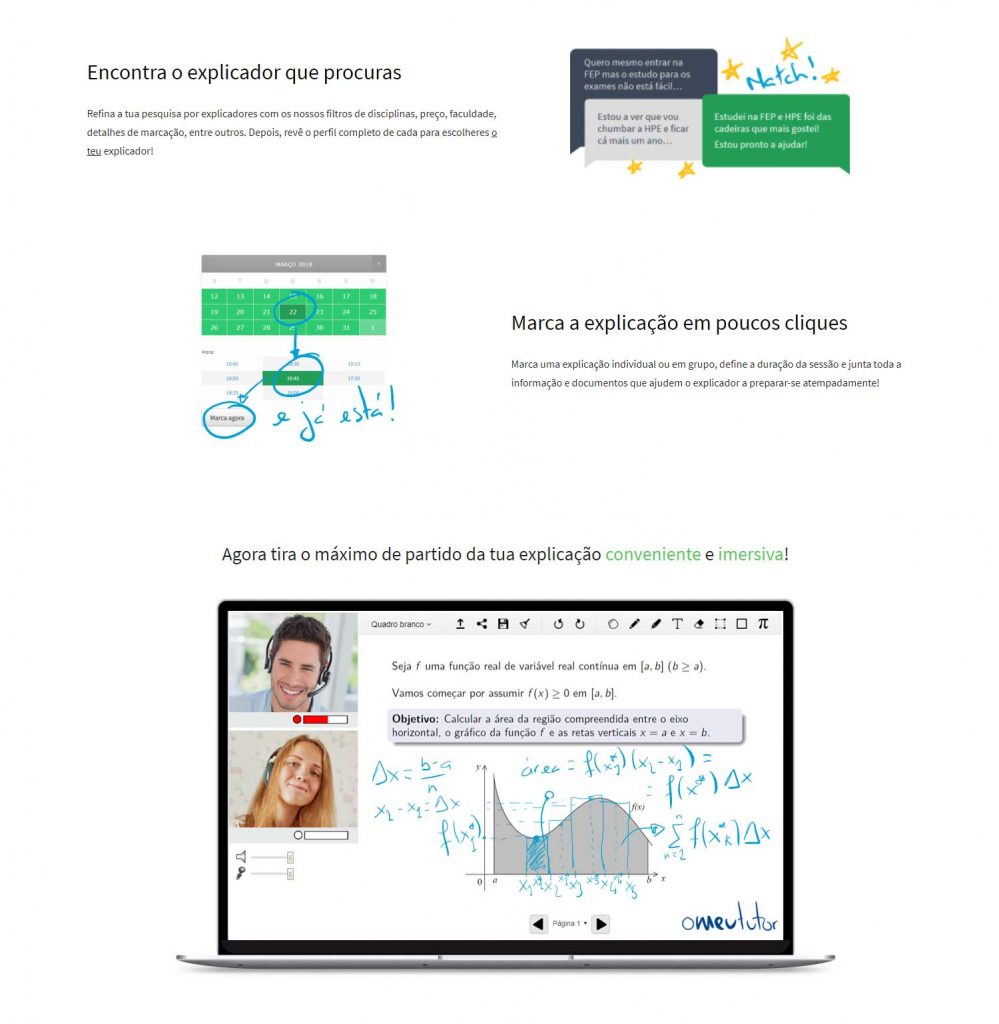
The marketplace offered 100% online tutoring. That means that the whole process from finding a tutor to having the tutoring session was all online. Sessions were held through an outsourced platform that I customized to look like in the image above.
Scrolling down the page, students learned about the platform’s features and they could experience it for themselves in a “demo room” at any time.
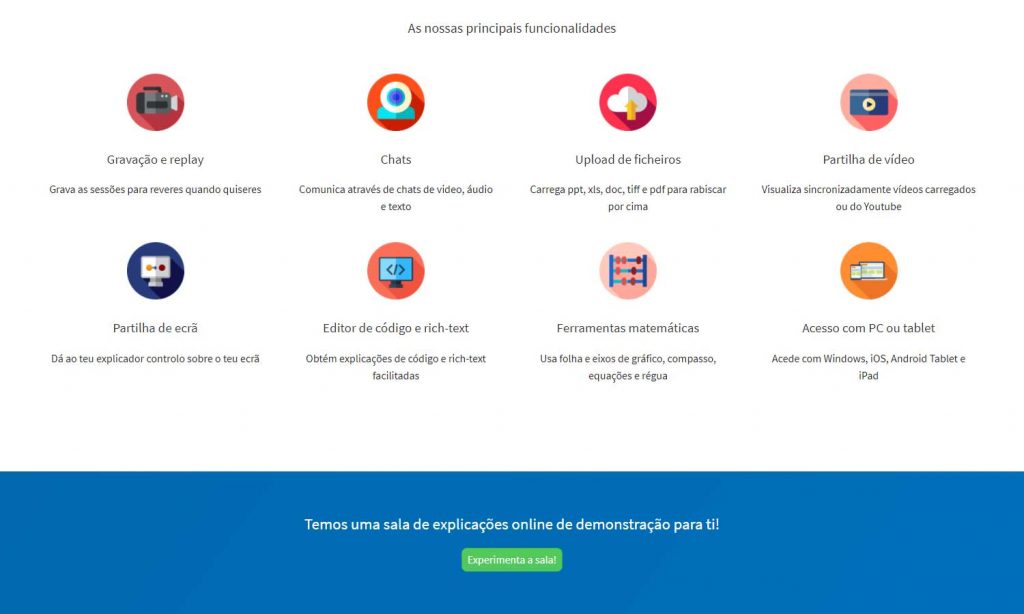
If the software was appealing to the students, they could then search for a suitable tutor in the “Tutor lists”. Tutor lists included the tutor’s name, a picture of them, their “headline” and short description, as well as the courses they tutored and the minimum price for a session. The page also allowed students to filter tutors according to several criteria.
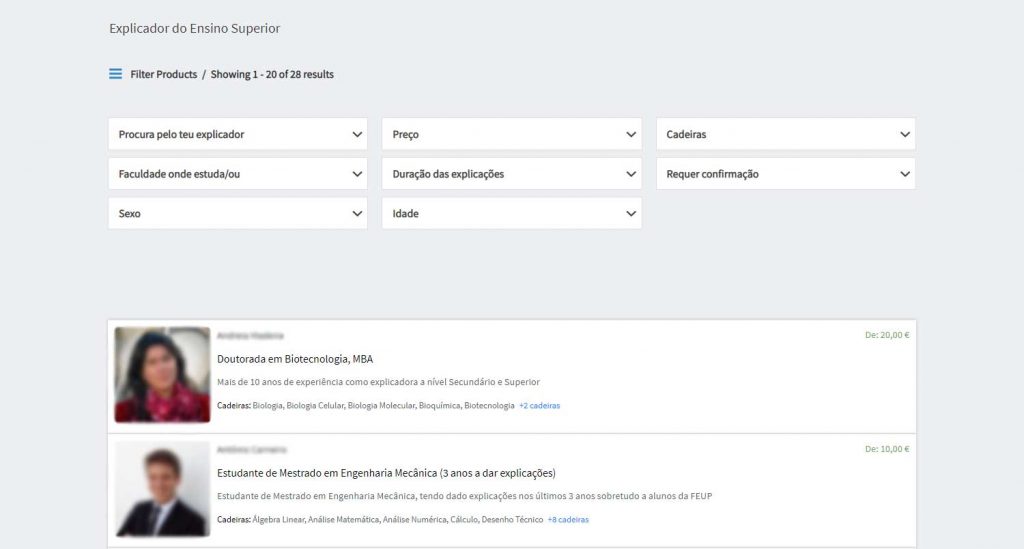
For tutors that seemed suitable, students could go to their profiles to get an in-depth description of the tutors’ academic background, experience, and approach to tutoring.
Having picked a tutor, the student would choose a slot in the tutor’s availability calendar, pick a subject, and optionally include some text and files for the tutor to read as context for the session.
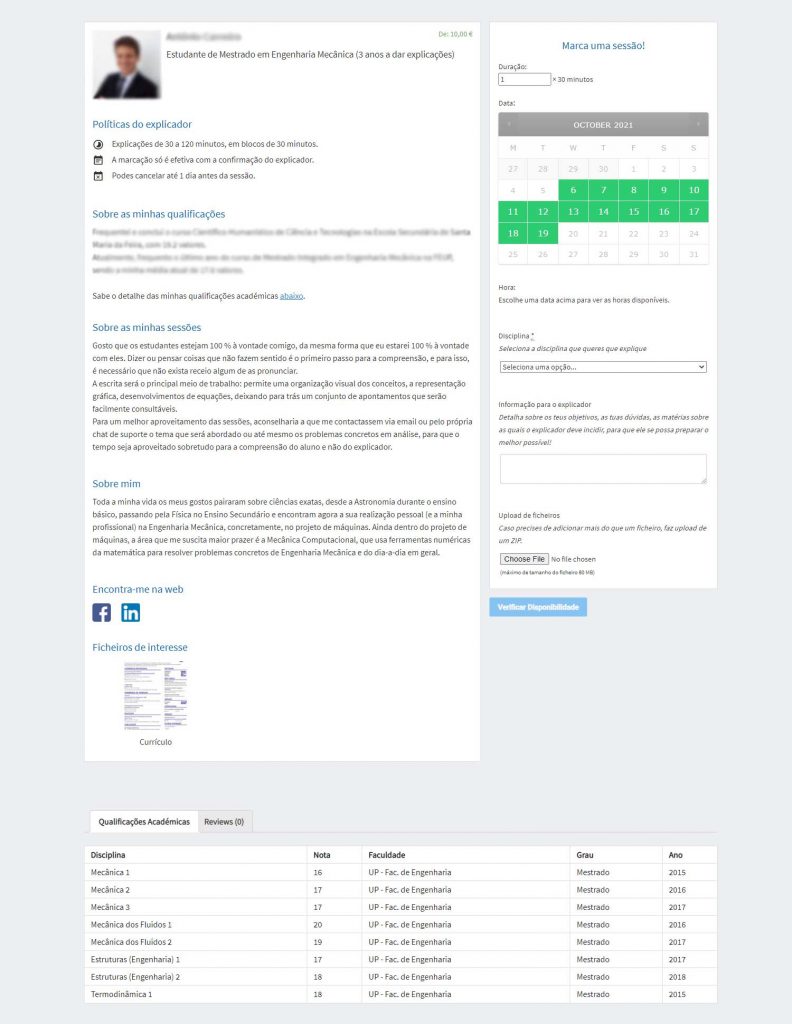
After submitting the form, a booking request was sent to the tutor. If the tutor confirmed it, off they were to have their session at the arranged date and time!
Tutors’ experience
The tutors’ journey started with them learning about our service on the “Tutor register” page. Here, I argued for giving tutoring sessions, particularly online ones, and for choosing us as the provider for the software stack (including bookings, payments, tutoring platform, etc.).

Scrolling down the page, tutors would find a form where they would submit basic information about themselves – name, email, etc. – and a short text describing why they would be a good addition to the tutoring community. If they convinced me, I would approve their registration, allowing them to complete their profile (namely set courses for which they could give tutoring, prices, and availability).
This process was briefly described on the same “Tutor register” page, as seen below.

Unfortunately though, the onboarding process wasn’t as smooth as depicted above. It was time-consuming and complex. The result was that, in its prime, over 400 tutors had registered on the website, but not even 100 had completed their profile and therefore were shown on the website as available for tutoring.
To try to solve this issue, at first I created some user guides on how to complete the profile, like the excerpt below exemplifies.

But a quick data analysis with Google Analytics showed that people who did in fact go to the guides didn’t stay long enough to read them. Afterward, I put a lot of effort into making the onboarding process easier, but the improvement in onboarding completion rates was minimal.
Roadmap
I’ve always valued being transparent to our product’s community of users. Therefore, even though I was struggling with many parts of the project, I decided to create a “Roadmap” page where I exposed our plans for the business and for the software’s features.
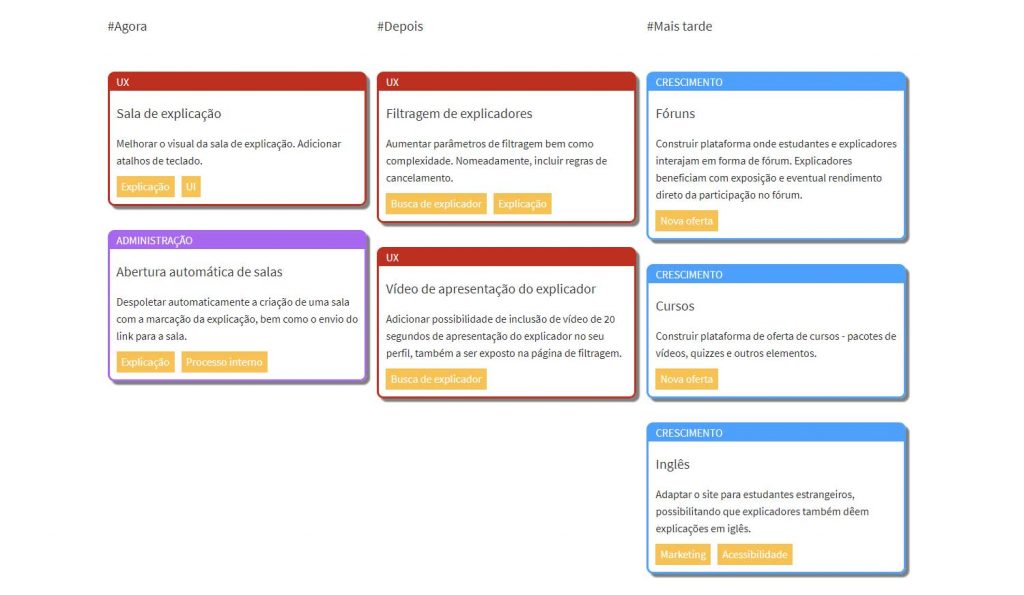
Of course, in hindsight, working on this was frivolous, but I guess it shows my commitment to transparency and inclusion of users’ feedback since users could submit their suggestions at the bottom of this page.
Blog
To promote the business, I started a blog that mainly targeted students applying to colleges.
I tried to make these articles insightful and original, so I got data from the Ministry of Education and made this data easy to read through dynamic visualizations.
Visualization of admission-grades to college courses

See post here.
Visualization on how students associate courses when applying to colleges

See post here.
However, I only wrote two articles before quitting the entire project. Still, both were a great success After posting them on Reddit, they drove significant traffic to the website. People’s feedback on Reddit was very good.
What I learned
Although I closed the website in 2019, and therefore all my effort resulted in nothing that is tangible today, I learned a lot with this project. Which is, of course, what everyone says in face of failure, but I do believe this failure has rendered me more capable of executing projects in the future and also more resilient.
I can group my learnings under three headers.
Execution > Idea
Execution is more important than having the idea. I believe that the idea behind omeututor.com was interesting and that there’s a growing market for it (note that the idea was not originally mine – I extracted it from similar services that existed in the world at that time). But my execution was terrible.
In particular, the prominent learnings I derived from my errors in execution were the following.
Validate hypotheses
It’s crucial to: first, explicitly build hypotheses on what users want and on your business model; and second, test those hypotheses with real users.
I, on the other hand, just did the work I believed had to be done, without actively validating my hypotheses. I mean, I did open some channels to receive feedback from users, namely in the Roadmap page I talked about earlier, but that’s not actively searching for validation. That’s only passively obtaining feedback, and the feedback I got through those channels was too little and too skewed.
This resulted in:
- A tremendous amount of work in features that turned out to be frivolous.
- Quitting too quickly because I had no way to assess whether the project as a whole was going to be successful.
Produce quality code and documentation
Quality code and documentation are not only a matter of pride in the work you do. They are absolutely essential for:
- Robustness. Meaning your app’s capacity to withstand stress and manage scenarios that you didn’t foresee without breaking.
- Maintainability. Quickly finding where bugs are so that fixes happen fast.
- Speed and agility in development.
Plan your UX
Every point of friction in the user experience will result in users leaving your app. In order to reduce exits in your pipeline, you have to plan your UX to be as simple, intuitive, and to require the minimum amount of effort/steps from your users as possible.
Healthy mindset > Senseless grit
When I was building omeututor.com, I was in terrible mental-health shape. My obsession with the business led me to overwork myself to the point of exhaustion, and no good decision comes from such a place. The more tired I became, the more narrowed my eyesight was, resulting in the execution errors I mentioned above.
I don’t jog anymore, but when I did, I many times sped up my pace in the last portion of the jog to make the pain end quicker. But time and time again, this has proven to be a self-defeating strategy because I just end up in more pain than necessary. This is what happened with omeututor.com. I tried to overrun my exhaustion by working harder to reach the finish line quicker, but this was a royal failure.
I realize now that a healthy mindset is a requirement to face any important challenge. Work-life balance, allowing yourself the time to zoom out, to look back and assess, and to plan the future, are all absolutely crucial.
Together > Alone
I’ve also realized the value of having a partner. I wonder how things would have been different if I had had someone to brainstorm with, review plans with, celebrate with, struggle with…
I’m to blame for having done this alone – I did not actively look for support. Next time, I’m going with a partner.
And now, on to new adventures!